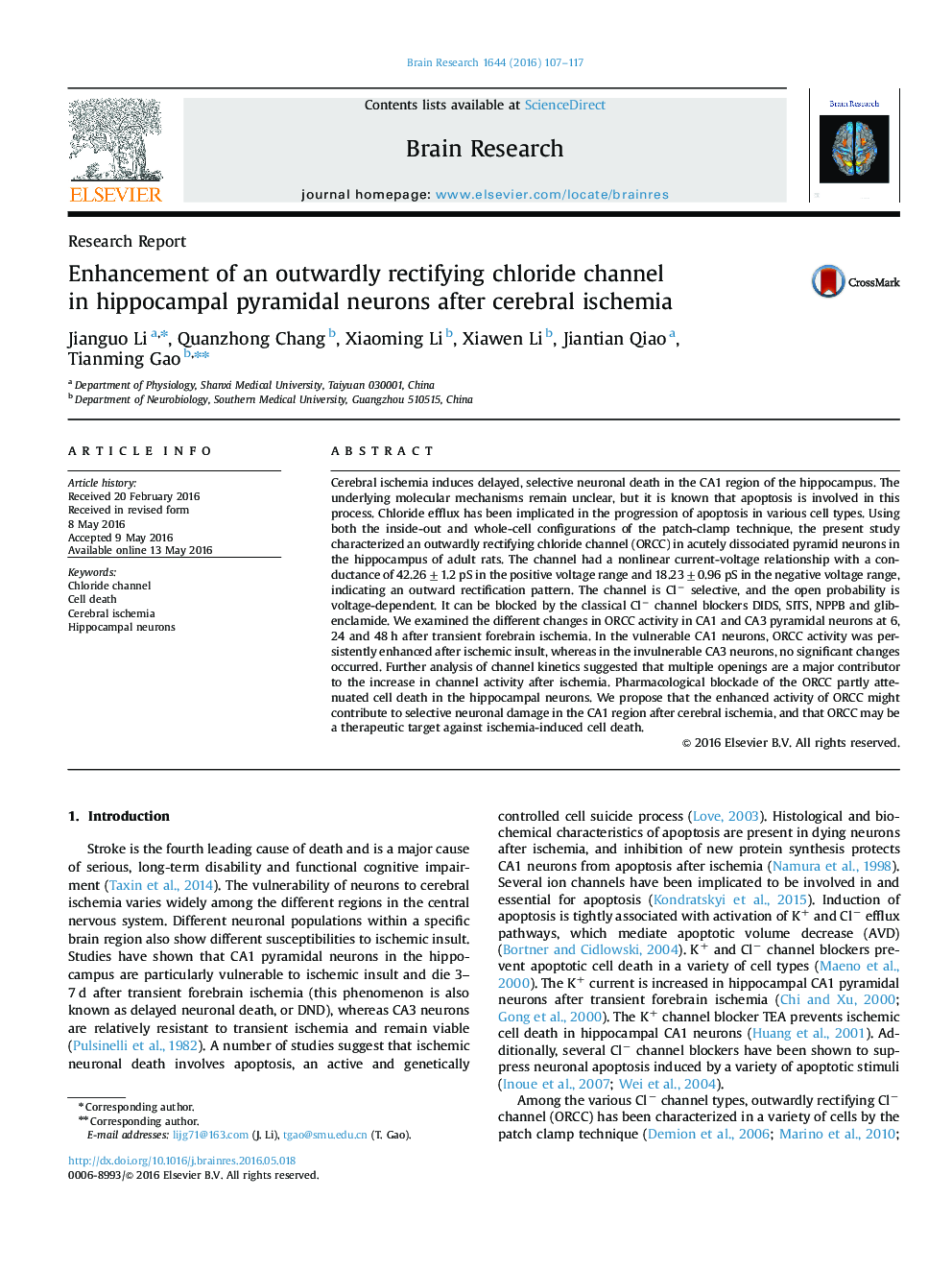| کد مقاله | کد نشریه | سال انتشار | مقاله انگلیسی | نسخه تمام متن |
|---|---|---|---|---|
| 6262461 | 1613798 | 2016 | 11 صفحه PDF | دانلود رایگان |
- An outwardly rectifying Chloride channel expresses in hippocampal pyramid neurons of adult rat.
- Channel activity is increased in CA1 but not in CA3 pyramidal neurons after ischemia.
- Blockade of channel partly attenuated cell death of hippocampal neurons.
Cerebral ischemia induces delayed, selective neuronal death in the CA1 region of the hippocampus. The underlying molecular mechanisms remain unclear, but it is known that apoptosis is involved in this process. Chloride efflux has been implicated in the progression of apoptosis in various cell types. Using both the inside-out and whole-cell configurations of the patch-clamp technique, the present study characterized an outwardly rectifying chloride channel (ORCC) in acutely dissociated pyramid neurons in the hippocampus of adult rats. The channel had a nonlinear current-voltage relationship with a conductance of 42.26±1.2 pS in the positive voltage range and 18.23±0.96 pS in the negative voltage range, indicating an outward rectification pattern. The channel is Clâ selective, and the open probability is voltage-dependent. It can be blocked by the classical Clâ channel blockers DIDS, SITS, NPPB and glibenclamide. We examined the different changes in ORCC activity in CA1 and CA3 pyramidal neurons at 6, 24 and 48 h after transient forebrain ischemia. In the vulnerable CA1 neurons, ORCC activity was persistently enhanced after ischemic insult, whereas in the invulnerable CA3 neurons, no significant changes occurred. Further analysis of channel kinetics suggested that multiple openings are a major contributor to the increase in channel activity after ischemia. Pharmacological blockade of the ORCC partly attenuated cell death in the hippocampal neurons. We propose that the enhanced activity of ORCC might contribute to selective neuronal damage in the CA1 region after cerebral ischemia, and that ORCC may be a therapeutic target against ischemia-induced cell death.
Journal: Brain Research - Volume 1644, 1 August 2016, Pages 107-117
